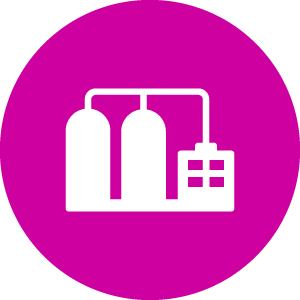U.S. IMPLEMENTATION Resource Hub
Unlocking Funding for Climate Action
We’re at a pivotal moment for climate action, leveraging historic investments to advance decarbonization through funding programs, tax credits, and supportive policies to push forward climate and clean energy projects across the country. It’s important to show how these policies are propelling businesses, states, and communities to a clean energy future and what more can be done to keep up the momentum.
CATF’s resource hub helps stakeholders take advantage of federal investments by providing technical research, calculators and other tools, and community benefit guides, spanning a variety of technologies. The hub also tracks progress on the ground to show where benefits are moving into communities and to share information about developing projects.
We need more options, not less, to reduce and mitigate emissions and protect public health. Funding programs, tax credits, and supportive policies are enabling this progress – and we can’t stop now.

Built to last: Climate progress near you
There has already been tremendous progress on climate and clean energy projects across the country. CATF is tracking where these projects are and how they are moving us to deep decarbonization – for communities, states, and the country.
Projects included below – focused on decarbonizing industry, transportation, power, and land – represent key federal investments in clean energy technologies including advanced nuclear, carbon management, and hydrogen, and development of transmission infrastructure. This tracker also includes key grants for states to plan for and implement deep emissions reductions.
Click here to view a full screen version of this map.
Map Disclaimers:
- Projects are limited to the technologies and sectors listed above and do not represent all federally funded projects
- Source of information is from public announcements and does not include private information
- Locations on the map are approximate based on publicly available data
- Data may change over time; map will be updated periodically. CATF is not legally liable for how this map is used
Resources
These resources share information about available Infrastructure Investment and Jobs Act (IIJA) and Inflation Reduction Act (IRA) funding, explain technology options to achieve decarbonization goals, and support the deployment of clean energy projects with helpful research, tools, and education materials.
Infrastructure Investment and Jobs Act and
Inflation Reduction Act Provisions
Resources by impact area
U.S. Implementation Toolkit: Resources for Projects On-the-Ground
Urgency: Timeline of IIJA and IRA Federal Funding
The actions we take over the next several years to implement the Inflation Reduction Act and Infrastructure Investment and Jobs Act will be critical to achieving the United States’ economic, environmental, and public health goals.*

Stay in the know
Sign up to receive updates as resources are added to this hub
"*" indicates required fields
















